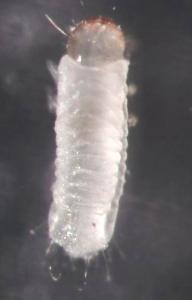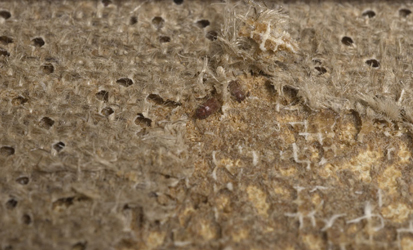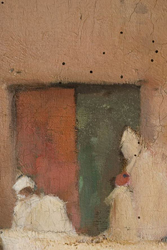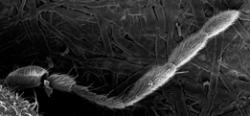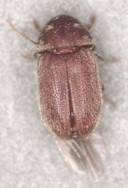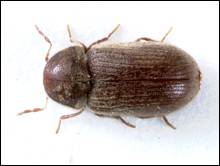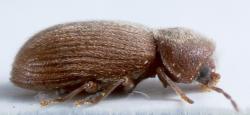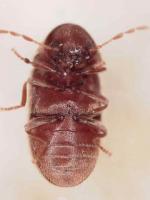Adult
Size
2 to 3.7 mm long.
Aspect
Cylindrical, oblong body, covered in a pubescence of very fine flat bristles.
Sharply domed thorax, wider on the sides, with a finely grainy, thickly pubescent surface, like the upper part of the elytra; elytra are ornamented with rows of lengthwise pits (striations).
Eleven-articled antennae, the last 3 articles form an elongate club (antennae are serrate and club-less in Lasioderma serricorne (see fact-sheet)).
Two rows of small spines (spinulae) on the ventral face of the first 6 abdominal segments.
Head partly covered by the pronotum which forms a kind of hood.
Colour
Entirely yellowish brown to deep dark brown, legs included.
Yellowish to greyish dorsal pubescence.


 Vrillette du pain; Vrillette boulangère; Stégobie des pharmacies
Vrillette du pain; Vrillette boulangère; Stégobie des pharmacies  Drugstore beetle; Biscuit beetle; Bread beetle
Drugstore beetle; Biscuit beetle; Bread beetle  Carcoma del pan (de las drogas)
Carcoma del pan (de las drogas)  Brotkäfer
Brotkäfer 
